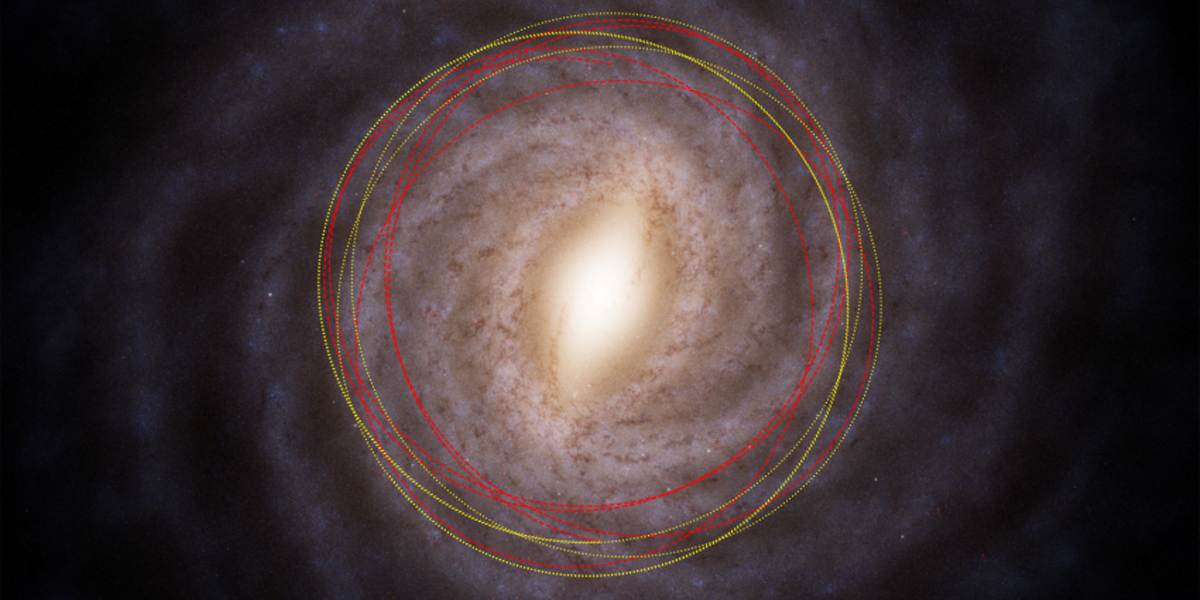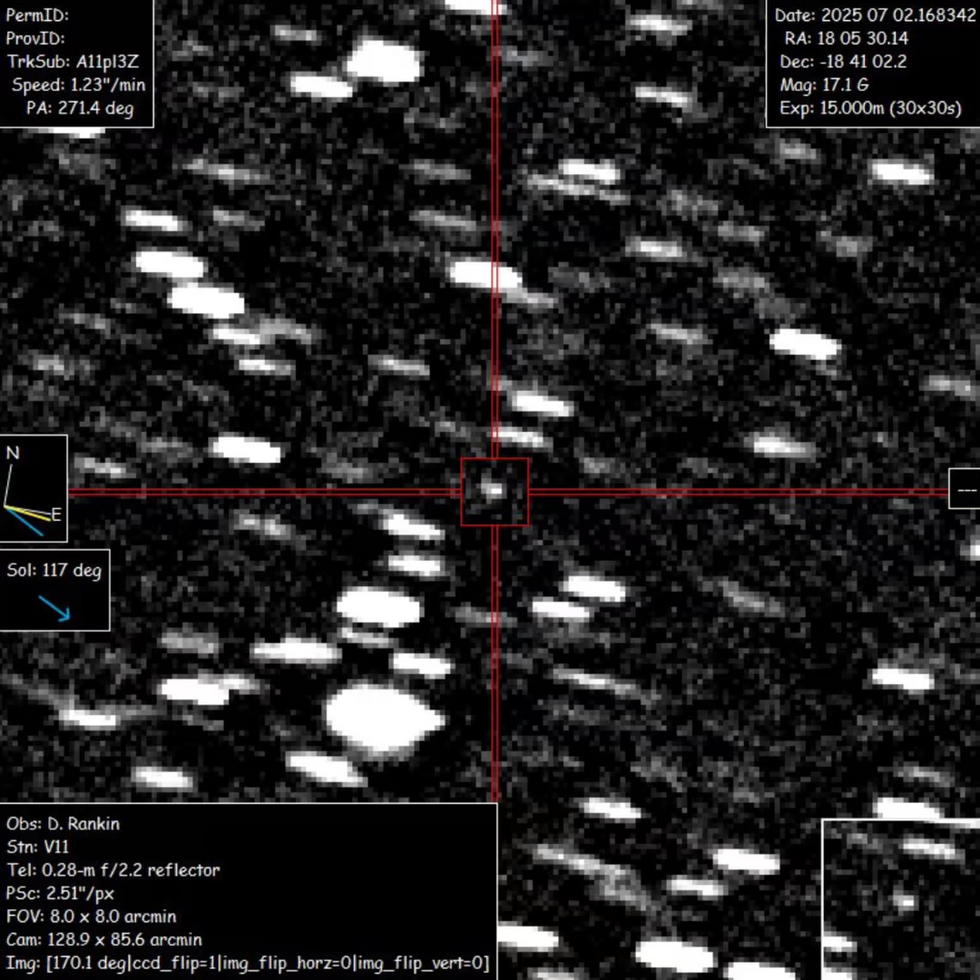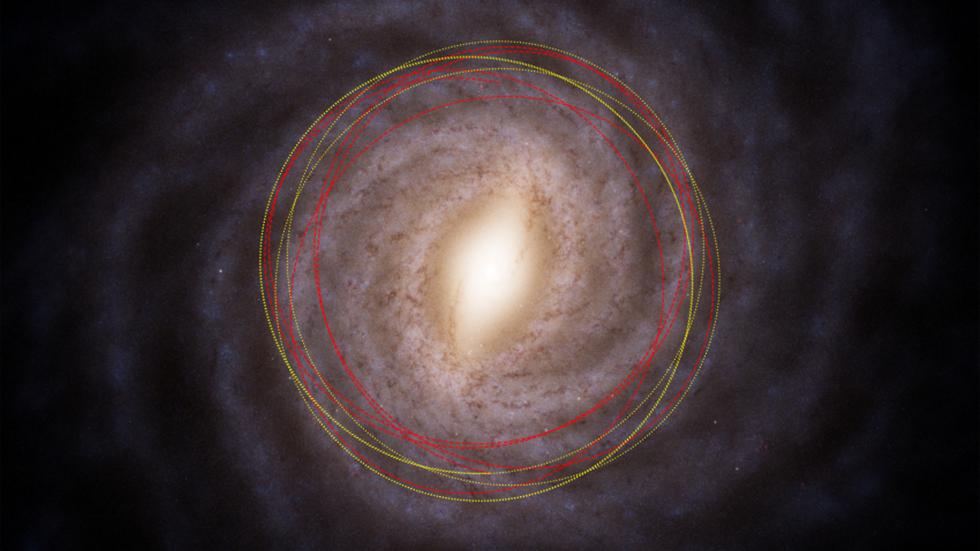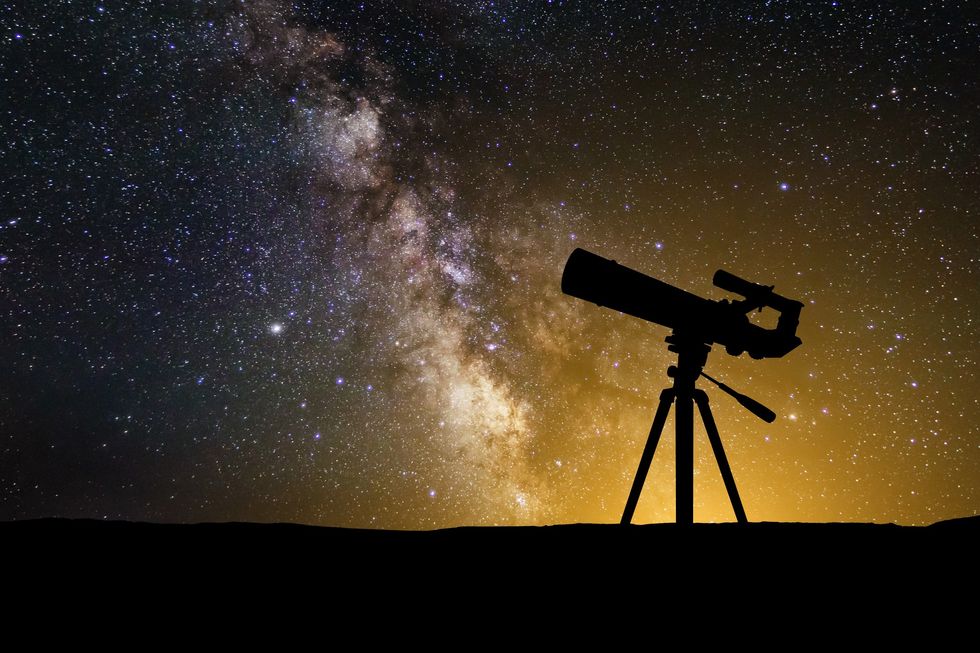



British astronomers may have solved the mystery of an "interstellar object" hurtling towards our planet.
Scientists believe the mysterious interstellar visitor may be the oldest comet ever observed.
The object, designated 3I/ATLAS or A11pl3Z, is thought to be some 3 billion years older than our solar system and represents only the third known visitor from beyond our cosmic neighbourhood.
What makes this discovery particularly remarkable is the comet's apparent origin from an unexplored region of our galaxy.
 A11pl3Z, measures an estimated 12 miles in width and will pass at a 'safe distance' from our planet on December 17GETTY
A11pl3Z, measures an estimated 12 miles in width and will pass at a 'safe distance' from our planet on December 17GETTY
The ice-rich object appears to have journeyed from the Milky Way's thick disc, a zone of ancient stars that exists above and below the familiar flat plane where most stellar bodies are found.
This trajectory sets it apart from the two previous interstellar objects detected entering our solar system.
University of Oxford astronomer Matthew Hopkins said: "All non-interstellar comets such as Halley's Comet formed with our solar system, so are up to 4.5 billion years old.
"But interstellar visitors have the potential to be far older, and of those known about so far our statistical method suggests that 3I/ATLAS is very likely to be the oldest comet we have ever seen."

PICTURED: Red lines showing the estimated orbits of 3I/ATLAS, and yellow lines show the Sun's in the Milky Way
MATTHEW HOPKINS/UNIVERSITY OF OXFORD
The comet could date back as many as 7.5 billion years - a relic from the galaxy's distant past.
Professor Chris Lintott, the study's co-author, said: "This is an object from a part of the galaxy we've never seen up close before.
"We think there's a two-thirds chance this comet is older than the solar system, and that it's been drifting through interstellar space ever since."
The ATLAS survey telescope in Chile first detected 3I/ATLAS on July 1 this year, when the object was approximately 670 million kilometres from the sun.

Astronomers think stargazers across Britain will have the chance to see the extraordinary celestial traveller later this year
GETTY
For comparison, Earth maintains a distance of 149 million kilometres from our star.
As the object approaches the sun, solar radiation will warm its icy surface, causing the release of vapour and dust that forms the characteristic luminous tail associated with comets.
Astronomers also think stargazers across Britain will have the chance to see the extraordinary celestial traveller later this year.
3I/ATLAS should become visible through moderate-sized amateur telescopes during the final months of 2025 and into early 2026.
